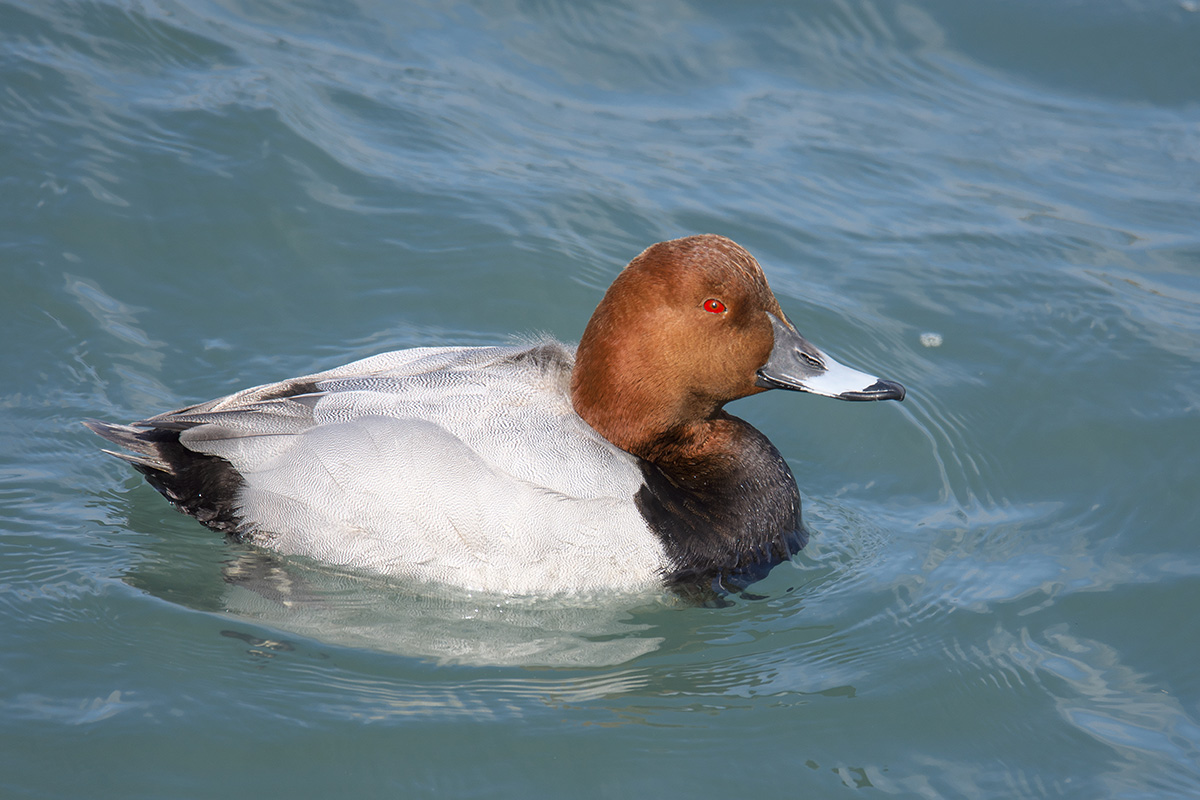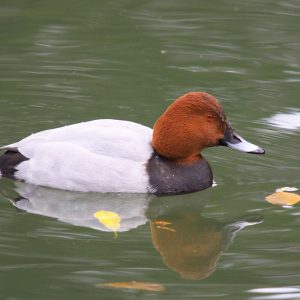むなかたが集まる
電子データベース
電子データベース
ホシハジロ

| 種目 | ホシハジロ (星羽白) | 分類 |
カモ目 カモ科 スズガモ属 |
学名 | Aythya ferina | 英名 | Commonn Pochard |
|---|---|---|---|---|---|---|---|
|
ホシハジロ (星羽白) |
カモ目 カモ科 スズガモ属 |
Aythya ferina | Commonn Pochard |
宗像市でみられる場所・時期
宗像では冬鳥。10月から3月にかけて観察することができる。
市街地の溜め池や,ダム湖などで見ることができる。多いときには数十羽になる。
キンクロハジロと同じような場所に居ることが多い。
特徴
全長45㎝。
雄は頭部から頸は赤茶色で,胸と腰,上下尾筒は黒色である。上面と腹からの体下面,脇は灰色で,黒褐色の細かい縞模様がある。嘴は青灰色で先端と基部は黒い。虹彩は赤い。
雌は頭部から後頸,胸が褐色で,喉は淡褐色となる。その他は灰褐色で,腰,上下尾筒は褐色みが強い。嘴は黒く,雄よりも灰色部が少ない。虹彩は焦茶色で,白いアイリングがある。
雌雄とも翼帯は肺白色となる。
習性
河川,池,水田,湖沼,内湾,港などで生息する。休憩場から夕方に餌場に飛び立ち,水生植物の茎や根,種子などの他,潜水して甲殻類などの動物質なども食べる。
分布
ユーラシア大陸の北部で繁殖し,ヨーロッパ,アフリカ北部,中近東,インド,東アジアで越冬する。日本では冬鳥として全国に飛来する。
その他
カモ類には,水に潜る種類(潜水採餌ガモ)と,水に潜らない種類(水面採餌ガモ)がいる。宗像で見ることができる種類で,水に潜る種類の代表格が,キンクロハジロとホシハジロである。
 はじめに
はじめに お問い合わせ
お問い合わせ